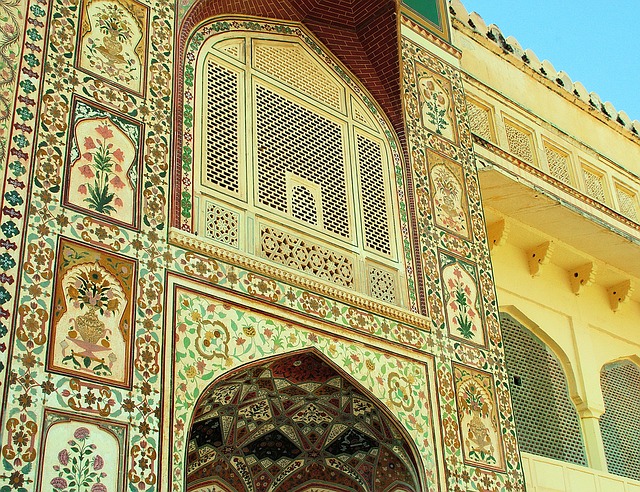A Day with the Toy Artisans of Channapatna

A cloud of dust billows up as the rickety state run bus leaves the bus stop. One hour back, en route to Bangalore from Srirangapatnam, Michelle, Nisha and I, spontaneously decide to get down at Channapatna – the land of toys. We head to the auto-rickshaw stand and hail a vehicle towards the toy factories. Although a couple of hours away, the weather here is sunny, hot and humid – a stark contrast to the cold and cloudy skies of Bangalore.
A ten minute bumpy ride later, we are on Tatekere Road, searching for a factory, hoping to see how these famous toys are made. The street is lined with small vegetable shops, vehicle repair workshops and small brick houses washed in bright colours. Halfway through the narrow lane, we spot a maroon board with Lacqureware Craft Complex painted on it in white.
“Come, come. You want to see how the toys are made?”
The auto takes the turn into a large open field with rows of buildings covered with tin roofs on the right and a row of makeshift and semi brick houses on the left. A group of 6-7 young boys run towards our vehicle and crowd us.
“Is this a toy factory?” I ask them.
“Yes,” they say unanimously.
Two faces pop out of the first workshop to our left and a middle-aged man motions us to come in saying, “Come, come. You want to see how the toys are made?”
“Yes,” we say.
A distinct hum of running machines fill the air as we enter the workshop shed. At the far end of the huge room, three men are busy working on the machines that reach the ceilings. The man who called us in, introduces himself as Dasharatha and then points to a man sitting at the far right corner saying, “Feel free to look around. You can ask him everything. Go ahead.”
We make our way across heaps of cut wood piled up on the floor to Muneer Pasha, a middle-aged man, with thin greying hair and a moustache, sitting precariously atop a wooden stool, working on a piece of wood attached to his workstation. Wearing a white sleeveless vest and a pair of sawdust covered trousers, he stops and looks up with his droopy eyes, as we greet him. His workstation is a muddle of wood chips, sawdust and tools.
His calloused hands reach for a piece of wood and work swiftly on the machine as he shapes it into a perfect round piece with his chipping tool.
“What type of wood are these?” I ask him.
“We use either Milk Wood or Ivory Wood to shape the toy parts. Lac is mixed with different vegetable dyes to give natural colour and then pressed onto the wood before polishing it with lac polish and print paper. All the designs are carved after that. Sometimes designs are also hand painted by us,” he says. “Let me show you a sample.” He starts to make a toy part.
His calloused hands reach for a piece of wood and work swiftly on the machine as he shapes it into a perfect round piece with his chipping tool. Next, he takes a stick of coloured lac and presses it against the soft white wood, effectively turning it black and then with a piece of print paper, polishes the piece. He draws a sharp pointed tool and with a swift motion, carves two concentric rings before cutting out the finished piece from the raw part. Within a matter of minutes, a perfect piece of wooden craft is ready. (Watch a video of the toy making here.)
“I have been working in the toy factory for 24 years,” he tells me, “my father also worked here and now my 18-year-old son has also joined the factory.” He deftly keeps working on the machine as he says further, “There are more than 5,000 artisans working in Channapatna in various factories, most of them for generations. Almost every family has 3-4 members in this trade and it has been passed onto us as a legacy.”
“This is simply beautiful,” I chirp like a child, still admiring the small piece of toy part he just finished.
However, I can’t help but notice the mediocre conditions they work in and still churn out hundreds of toys every day that bring so much joy to children.
“It is not just toys, we also make keychains, bangles, bracelets, hair accessories, even napkin holders and coasters,” he tells us as he starts to fish into a gunny sack next to him and pulls out a handful of keychains with smiling faces painted on small round wooden surfaces. Seeing him, the other artisans also reach out for their respective wares and we are suddenly surrounded by a mélange of colourful knick- knacks. They encourage us to buy a few things and we realise that the prices they are quoting are half of what we get in Bangalore. We indulge in a small shopping spree in the tin-roofed factory.
Dasharatha, wearing a dark green t-shirt and trousers, now joins in and tells us proudly, “These toys we make are not just playthings, they are informative too, like the abacus that we make. They are exported all over the world, even to Europe and USA.”
At his statement, I recall reading a news article about Michelle Obama being impressed with the organic nature and safe edges of these toys, on her recent visit to India and taking a few back to the White House as mementoes. I tell Dasharatha about this news article and instantly he agrees, “Yes, they are very safe for children as they have no sharp edges and no harmful chemical paints.”
A Day with the Toy Artisans of Channapatna.
Their enthusiasm and pride in their art is almost infectious. However, I can’t help but notice the mediocre conditions they work in and still churn out hundreds of toys every day that bring so much joy to children. Conditions today are definitely much better than they were for earlier generations that worked on the same factory floors, but the staff’s eagerness to make a sale also tells a tale of wages that are nowhere close to what they deserve for their exquisite art.
After the half hour tour of the factory with these warm-hearted and welcoming artisans, we make our way back to the bus station, our bags filled.
Top photo by Pixabay.









thanks to share theprecious story about channapatna
Thank you Soma. I am glad you liked the article 🙂
Beautiful!
it is pleasing to the soul to chance upon different cultures and artisans around the globe. There is so much to be learnt from their non commercial, happy hearts.
Well done, Keep writing! 🙂
Thank you Laila 🙂 It is indeed very enriching to see these simple people so dedicated to their craft. I am glad you enjoyed the article!